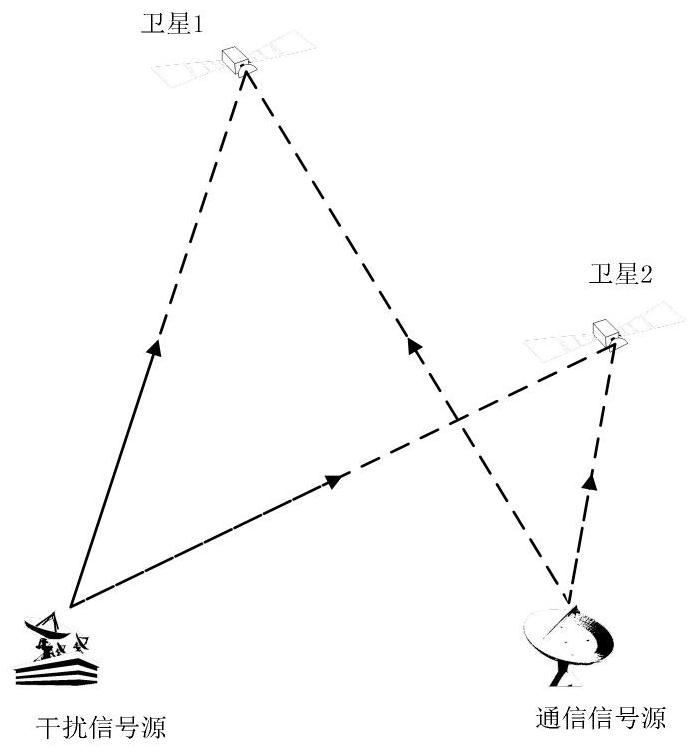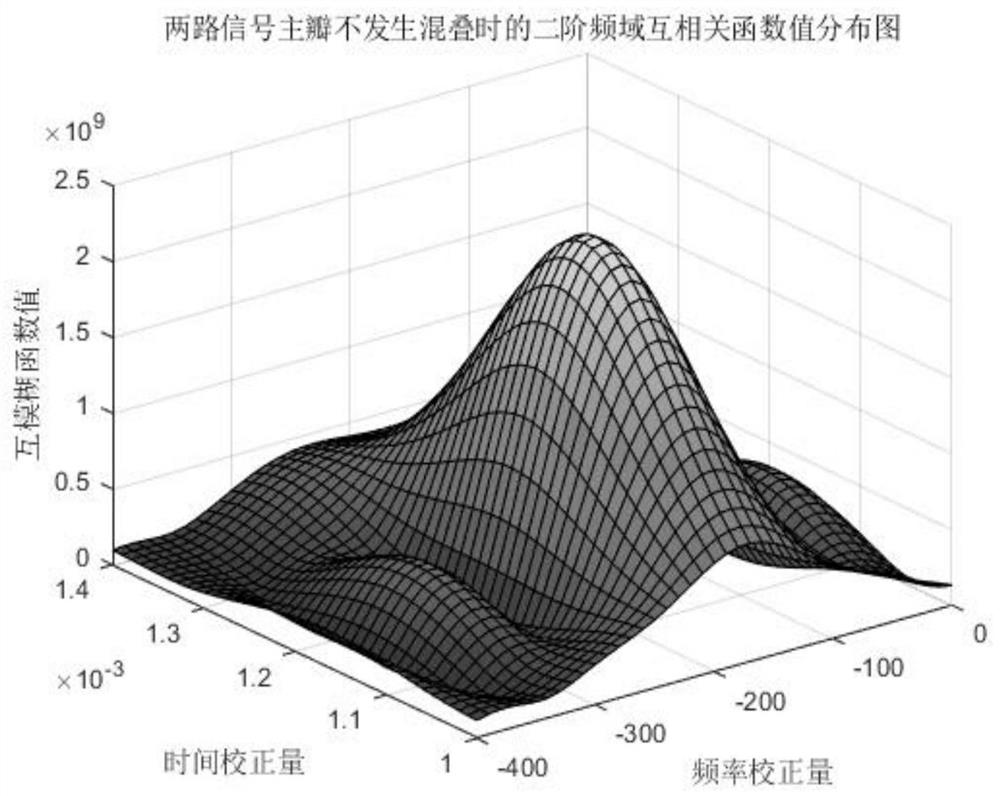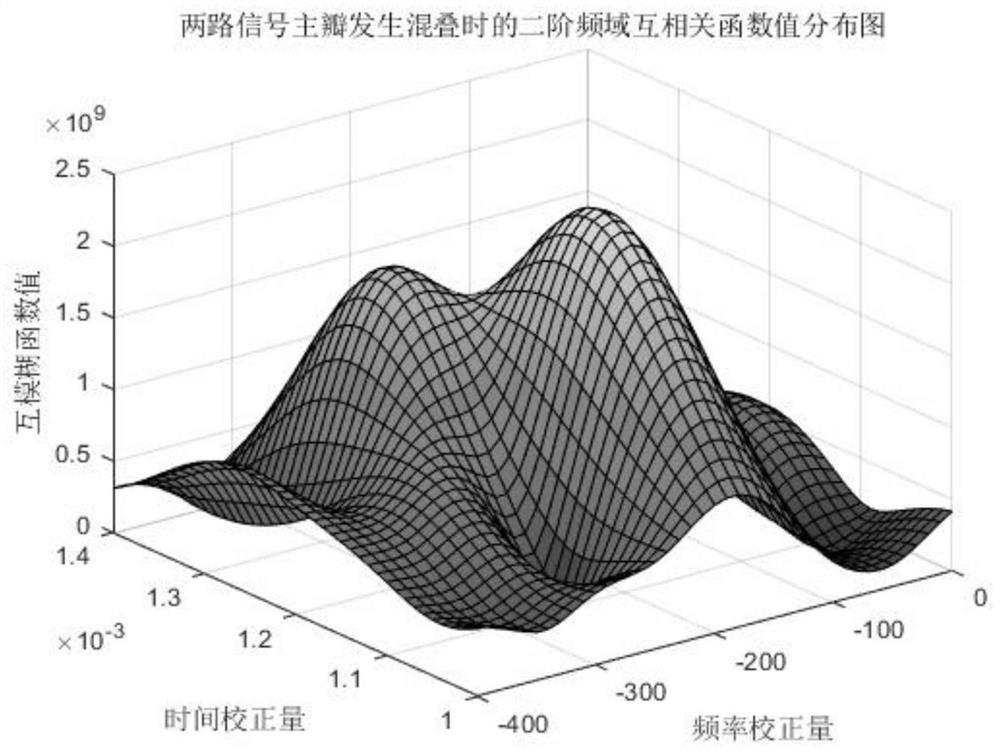A Time-Frequency Difference Estimation Method for Time-Frequency Aliasing Signals
A technology of aliasing signals and time-frequency difference, applied in transmission systems, baseband system components, electrical components, etc., can solve the problem of reducing the amount of calculation, the fourth-order maximum likelihood algorithm has a large amount of calculation, and the separation and positioning of non-aliasing signals, etc. problem, to achieve the effect of improving the estimation accuracy
- Summary
- Abstract
- Description
- Claims
- Application Information
AI Technical Summary
Problems solved by technology
Method used
Image
Examples
Embodiment 1
[0067] The frequency domain cross-correlation algorithm described in the step S1 is derived from the fourth-order maximum likelihood algorithm. The fourth-order maximum likelihood algorithm is expressed as:
[0068]
[0069] Among them, X 1 is the result of discrete Fourier transform on the first signal, X 2 (τ, υ) is the result of performing discrete Fourier transform on the signal after the time delay τ and frequency offset υ of the second channel signal. Different values of τ and υ are used to obtain different values of the fourth-order maximum likelihood function. Among them, the τ value and υ value corresponding to the largest fourth-order maximum likelihood function value are the estimated values of TDOA and FDOA;
[0070] The frequency-domain cross-correlation algorithm is simplified from the fourth-order maximum likelihood algorithm, and the frequency-domain cross-correlation algorithm described in the step S1 is expressed as:
[0071]
[0072] Among th...
Embodiment 2
[0081] refer to figure 1The aliasing scenario of the communication signal and the interfering signal is shown. Both satellite 1 and satellite 2 received aliased signals from the communication station and the jamming station. Assume that the signal transmitted by the communication signal source is s 1 (t), the signal emitted by the interference signal source is s 2 (t), then the signals received by the two satellites can be modeled as
[0082]
[0083]
[0084] In the formula, ω 1 (t) and ω 2 (t) represents Gaussian white noise received by two satellites, a 11 、a 21 、a 12 and a 22 Both are the amount of signal fading, τ 11 , τ 21 , τ 12 and τ 22 is the time delay, ν 11 、ν 21 、ν 12 and ν 22 is the frequency shift.
[0085] The true value of the time difference Δτ of the communication signal 1 Sum frequency difference true value Δν 1 , the true value of time difference Δτ of the interference signal 2 Sum frequency difference true value Δν 2 for
[0086...
Embodiment 3
[0124] The method for obtaining the peak-to-average ratio of the interference signal correlation peak in the step S4 is as follows:
[0125] Set the equivalent fading of the communication signal as That is, the amount of fading from the communication signal to the two satellites is Then the cross-correlation function of the communication signal becomes:
[0126]
[0127] The correlation function of the aliased signal minus the correlation function of the communication signal is
[0128]
[0129] As shown in the above formula, there is The component of , only the autocorrelation component of the communication signal is completely removed, that is In the case of , the estimated value of TDOA and FDOA of the interference signal can be further improved;
[0130] In order to remove the correlation component of the communication signal more thoroughly, we can introduce the peak-to-average ratio λ, which is the peak / average value of the correlation peak. When λ reaches ...
PUM
 Login to View More
Login to View More Abstract
Description
Claims
Application Information
 Login to View More
Login to View More - R&D
- Intellectual Property
- Life Sciences
- Materials
- Tech Scout
- Unparalleled Data Quality
- Higher Quality Content
- 60% Fewer Hallucinations
Browse by: Latest US Patents, China's latest patents, Technical Efficacy Thesaurus, Application Domain, Technology Topic, Popular Technical Reports.
© 2025 PatSnap. All rights reserved.Legal|Privacy policy|Modern Slavery Act Transparency Statement|Sitemap|About US| Contact US: help@patsnap.com



